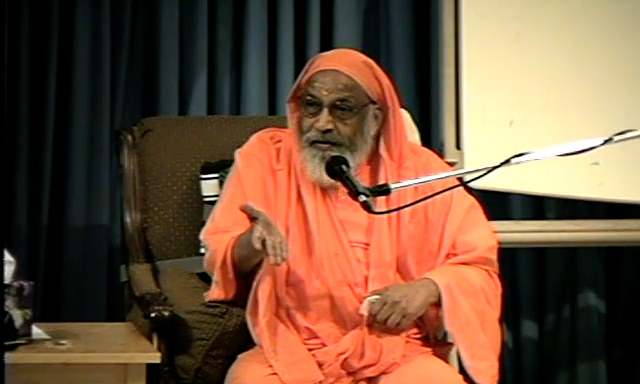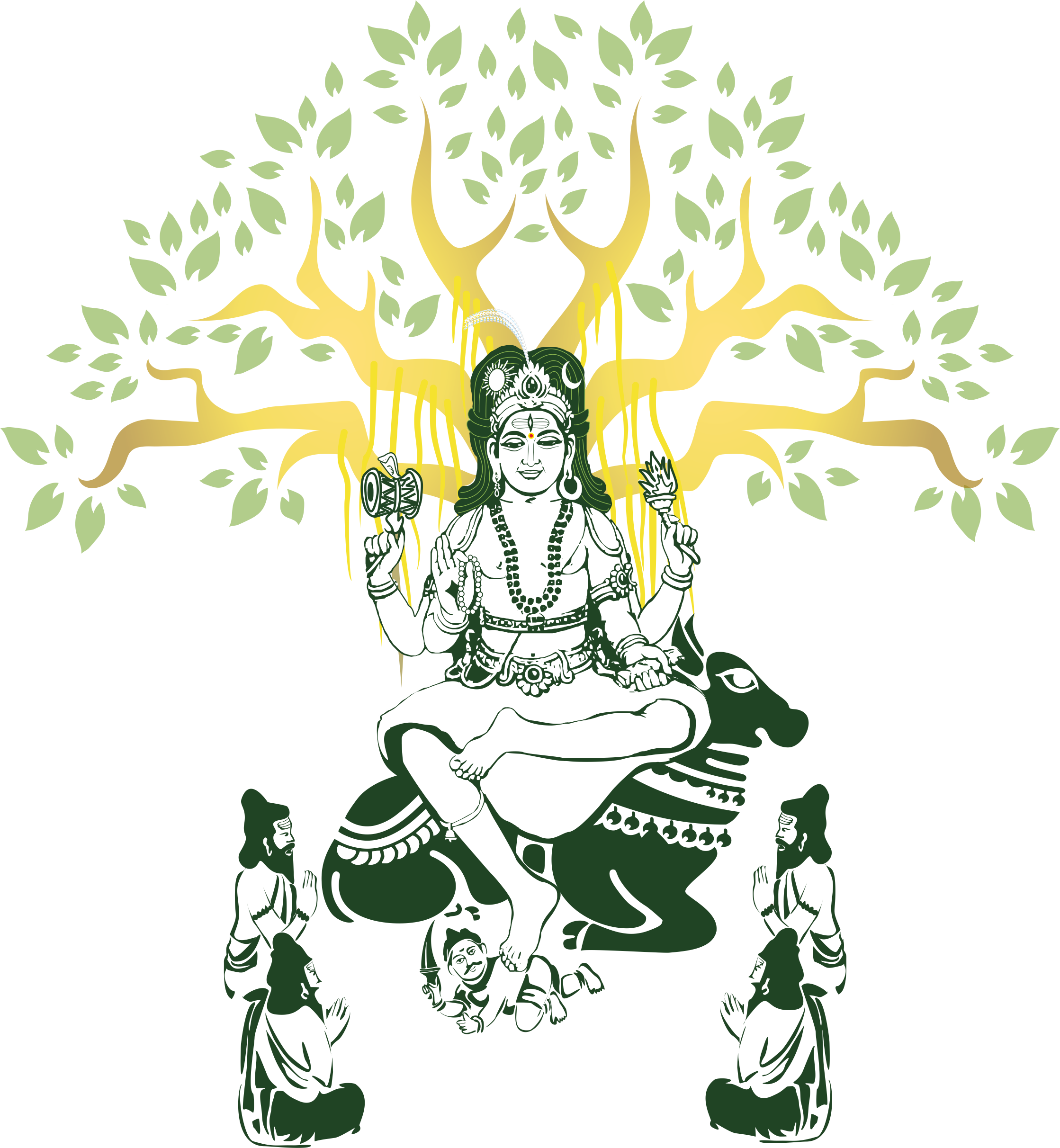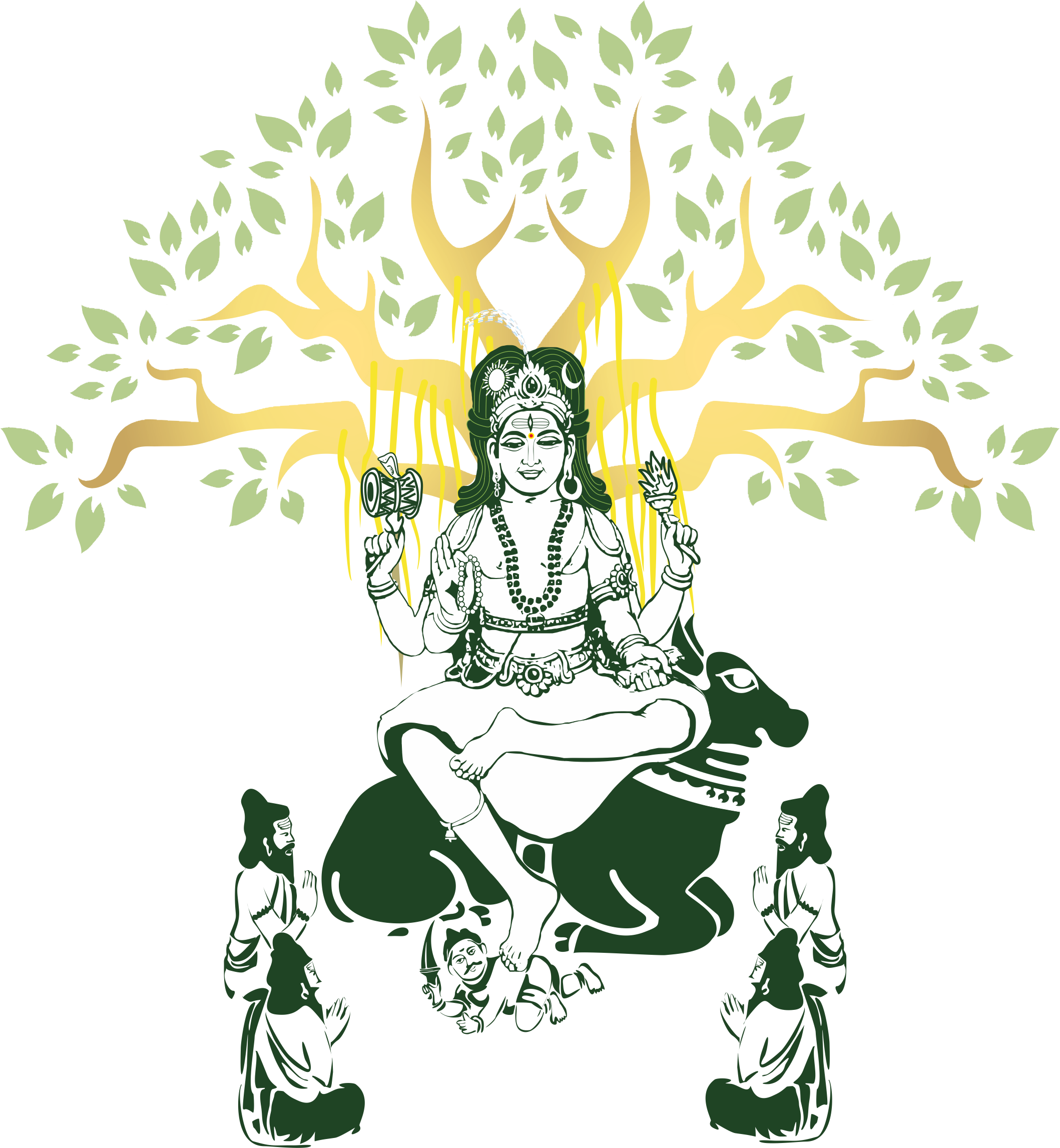Lord Ganesa
By Swami Dayananda Saraswati
Published in Arsha Vidya Gurukulam 33rd Anniversary Souvenir

I find that Lord Gaṇeśa is very popular in all our remote villages.
Even people from non-Indian traditions like the form of Lord Gaṇeśa because
they can relate to it, even when they cannot relate to any other form. The
written form of Om can be seen in the form of Gaṇeśa. The Om itself cannot be
worshipped because you cannot have a form for Om. It is a sound symbol, a
pratīka, and not a physical form, a pratimā. Lord Gaṇeśa is the inspiration for
every artist. Each one gives us a form that is unique and beautiful. You cannot
worship omkāra in its written form, but you can worship Lord Gaṇeśa, which has
a form that suggests the written form of Om.
agajānanapadmārkaṁ gajānanaṁ aharniśam
anekadantaṁ bhaktānāṁ ekadantaṁ upāsmahe|
“We meditate day and night on the one-tusked one who is the
sun for the lotus in the form of the face of Pārvatī, the one with the elephant
face and the one who is the giver of all desired ends to his devotees.”
Gajānanam ekadantam aharniśam upāsmahe. Gaja means elephant
and anana means face. Gajānana is one who has the face of an elephant. Ekadanta
is the one who has only one danta, tusk. Upāsmahe means ‘we meditate upon,’ and
aharniśam means ‘day and night.’ We meditate day and night upon that one who
has the face of an elephant and who has one tusk.
Agajānana-padmārkam is a compound word. That which is born
is jaḥ.1 Gaḥ means that which goes.2 Agaḥ means that which does not move.3 This refers
to a parvata, mountain. The king of the mountain is called parvata-rājā.
Agajānana means agāt jāyate, the one who is born of agaḥ, the mountain king.
This is Goddess Pārvatī. Pārvatī is called agajā or girijā. In this context,
agajānanam is agajayaḥ ananam, the face of Goddess Pārvatī. This face of
Pārvatī is likened to the lotus, padma.4
For a lotus to bloom, the presence of the sun is required. While
the waterlily blooms in the wake of moon at night, the water lotus blooms only
when the sun is up. Arka means the sun. So too, Pārvatī’s lotus-like face
requires a sun to bloom, and this is Lord Gaṇeśa. He is the one who is the sun,
as it were, for the lotus that is the face of Goddess Pārvatī. When she sees
Lord Gaṇeśa, she is so happy that her face blossoms. Lord Gaṇeśa is himself
gajānana, the one who has the face of an elephant, which is a symbol for all
wisdom and all power.
What is anekadantam? This is actually two words: anekadam
and tam. The one who gives is daḥ.5 The one who gives ekam, one
thing, is called ekadaḥ.6 But Lord Gaṇeśa is not the giver of only
one thing: he is anekadaḥ, the giver of all that you want. In the second case
ending, it becomes anekadam. He gives aneka: dharma, artha, kāma, and mokṣa.
You can get everything by his grace. Tam means him. Anekadam tam means unto
that Lord, whose grace will help you achieve everything.
For whom is he anekadaḥ? Bhaktānām, for his devotees, those
who invoke him. We meditate upon this Lord Gaṇeśa.
The vedic mantra invoking the grace of the Lord Gaṇapati is
chanted first before the chanting of Rudram.
om ganānāṁ̎ tvā gaṇapa̍ tigm havāmahe
kaviṁ ka̍ vīnāmu̍ pa̱maśra̍ vastamam|
jyeṣṭharājaṁ̱ brahma̍ ṇāṁ brahmaṇaspata̱
āna̍śśṇvannū̱tibhi̍ssīda sāda̍ nam||
“Through praise we worship you, the Lord of Vedas, the leader
of all groups of devas, the visionary of all visionaries (all-knowledge), the
one who has great fame through various similes, the most exalted of the knowers
of Brahman and the one who shines in the hearts of devotees. Listening to our
prayers of praise, please sit at the altar of our hearts with all protective
means.” Here, Lord Gaṇapati is looked upon as parameśvara and not as a given
devatā. It is so because he is addressed by the word brahmaṇaspate, “O Lord of
brahma – the Veda śāstra.” The word ‘brahma’ here means the body of knowledge known
as Veda. Pati means the Lord. Brahmaṇaspate – O Lord of the Veda, parameśvara!
The subject matter of the Vedas, like the devatās, rituals, heaven and so on,
is not within the range of human perception and inference. It has to be
revealed by the source of all-knowledge, the Lord. The ṛṣis7 are the
recipients of this sacred knowledge.
We can also interpret the word brahma as Hiraṇyagarbha, the
creator of Brahma. So Gaṇapati here is parameśvara.
Gaṇānām tvā havāmahe – We worship you, parameśvara, the
Lord, the creator and protector of gaṇas, all living beings including the
devas. A deva, deity, is also one of the manifestations of īśvara.
“You being the Lord, havāmahe, we worship you, parameśvara,
we worship you for a pure mind.” It is a mumukṣu’s prayer. You seek the Lord’s
grace to accomplish various goals in life. A human being, though intelligent, many
a time becomes helpless. Intelligent living is seeking help when you need it,
and here you offer a prayer to ask for help.
Gaṇapati is kavīnām kaviḥ. Kavi means the one who knows the
past, present, and future. A good astrologer is also called kavi, as is a poet.
Gaṇapati is the kavi of all kavis. All the kavis need the grace of this kavi,
even to be a relative kavi. He is all-knowledge.
Gaṇapati being parameśvara, there is no simile for him. In other
words, parameśvara is like parameśvara. Vālmīki said, “rāma-rāvaṇayoryuddham-rāma-rāvaṇayoriva
– the battle between Rāma and Rāvaṇa was like the battle between Rāma and Rāvaṇa.” So the mantra says
upama-śravastamam.
What is upamā? Upamīyate anayā iti upamā – that by which something
is approximated. Many upamās are given in the śruti, such as space to point out
the all-pervasiveness of the Lord and sun to point out the effulgence of the
Lord. The sun example is also used to represent one being many; there is only
one sun, but its reflections are many. One comes to know that in spite of all the
varieties of upamās that the śruti gives, the Lord stands far beyond them, his
glory being infinite. He is upamā-śravastama8 – the one who is
praised in various upamās and yet there is no one equal to him. He stands apart
and cannot be compared with anything, which is why the Lord cannot be
flattered. Anything one says will fall short of his glory. For the same reason,
the Lord can be understood in his transcendental nature as one who is free from
all attributes. And everything else is only his manifestation. Thus
appreciating parameśvara, havāmahe, we worship.
Jyeṣṭharājam – The one who always shines in the hearts of
the devotees is rājā. He also shines in the hearts of even those who are not
devotees, but is not recognized by them. One who is to be counted and reckoned
with in society is jyeṣṭha.
Naḥ śṛṇvan ūtibhiḥ sādanam āsīda – Listening to our praises, with all protective means, please sit at the altar of fire ritual, sādanam, in our heart. We, your devotees, are praising you, revealing who you are, and these words of prayer merely state your virtues. The more words you have for Bhagavān, the fewer the things which are outside Bhagavān. You see the ananta, limitless, totally as well as severally. All individual objects are also parameśvara, and you can see this up to the quantum level. Any ray of glory is īśvara. The less of you and the more of īśvara, the more you get in life. By our own individual presence, we deny the whole. Listening to all these prayers, may you abide in our heart and protect us.
1 jāyate iti jaḥ
2 gacchati iti gaḥ
3 na gacchati iti agaḥ
4 agajānanam eva padmam
5 dadāti iti da
6 ekam dadāti iti ekadaḥ
7 ṛṣati jānāti iti ṛṣiḥ, mantra-draṣṭā – the one who knows is ṛṣi, the seer of mantras
8 upamīyate anena iti upamanam – taiḥ ākāśādyupamanaiḥ śṛotṛṇām cetasi samutpannam śravaḥ = kīrtiḥ yasya saḥ tathoktaḥ upamaśravaḥ atiśayena upamaśravaḥ upamā – śravastamaḥ tam – that simile by which an object is illustrated is upamanam, example; with such examples as space and so on, the knowledge of whose glory is born in the minds of the
listener is upamaśravaḥ, and the one whose glory is beyond comparison, in other words, the one who is the most glorious, is upama-śravaḥ, and the one whose glory is beyond comparison; in other words, the one who is the most glorious is upama-śravastamaḥ, tam = him



